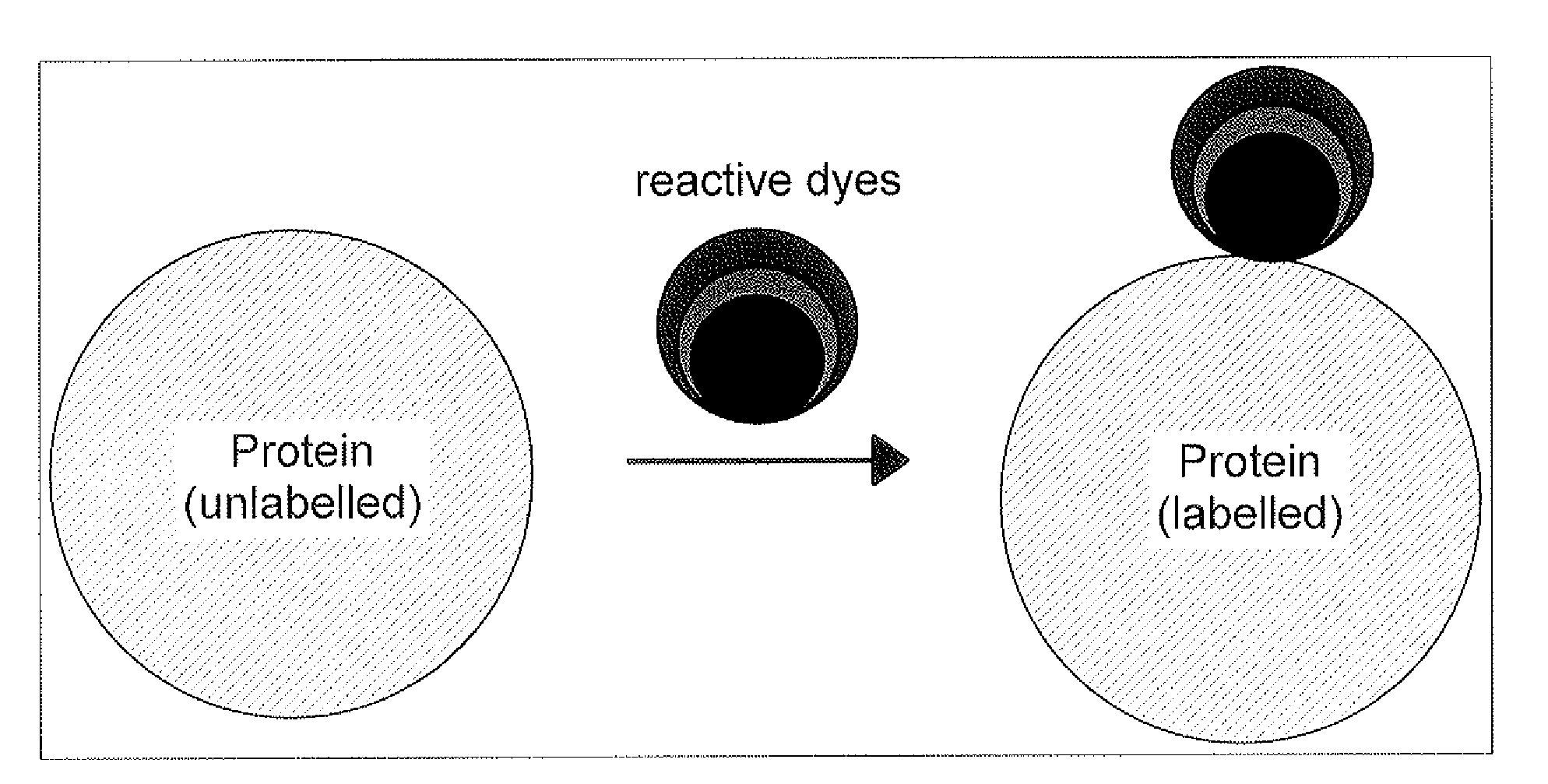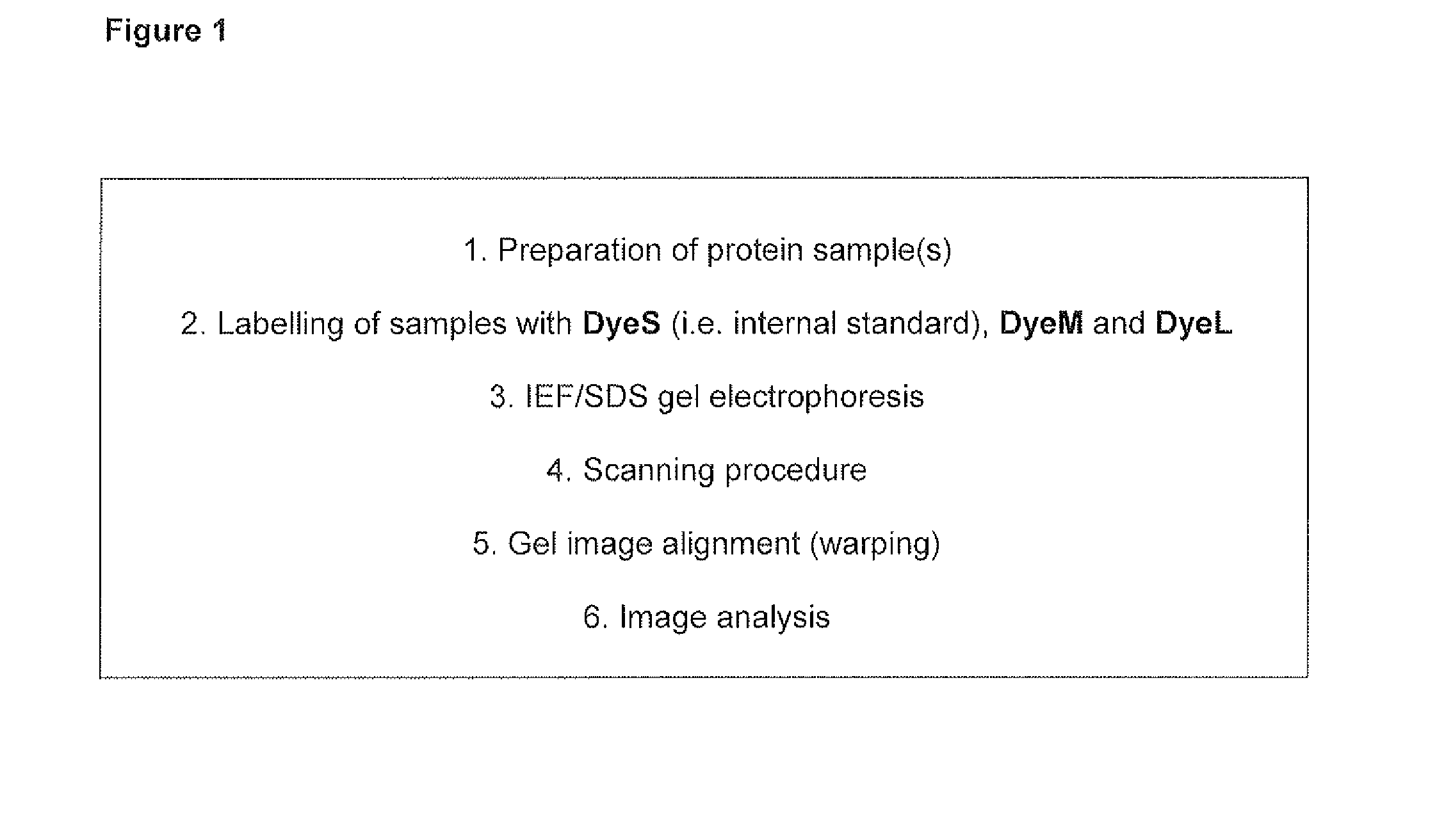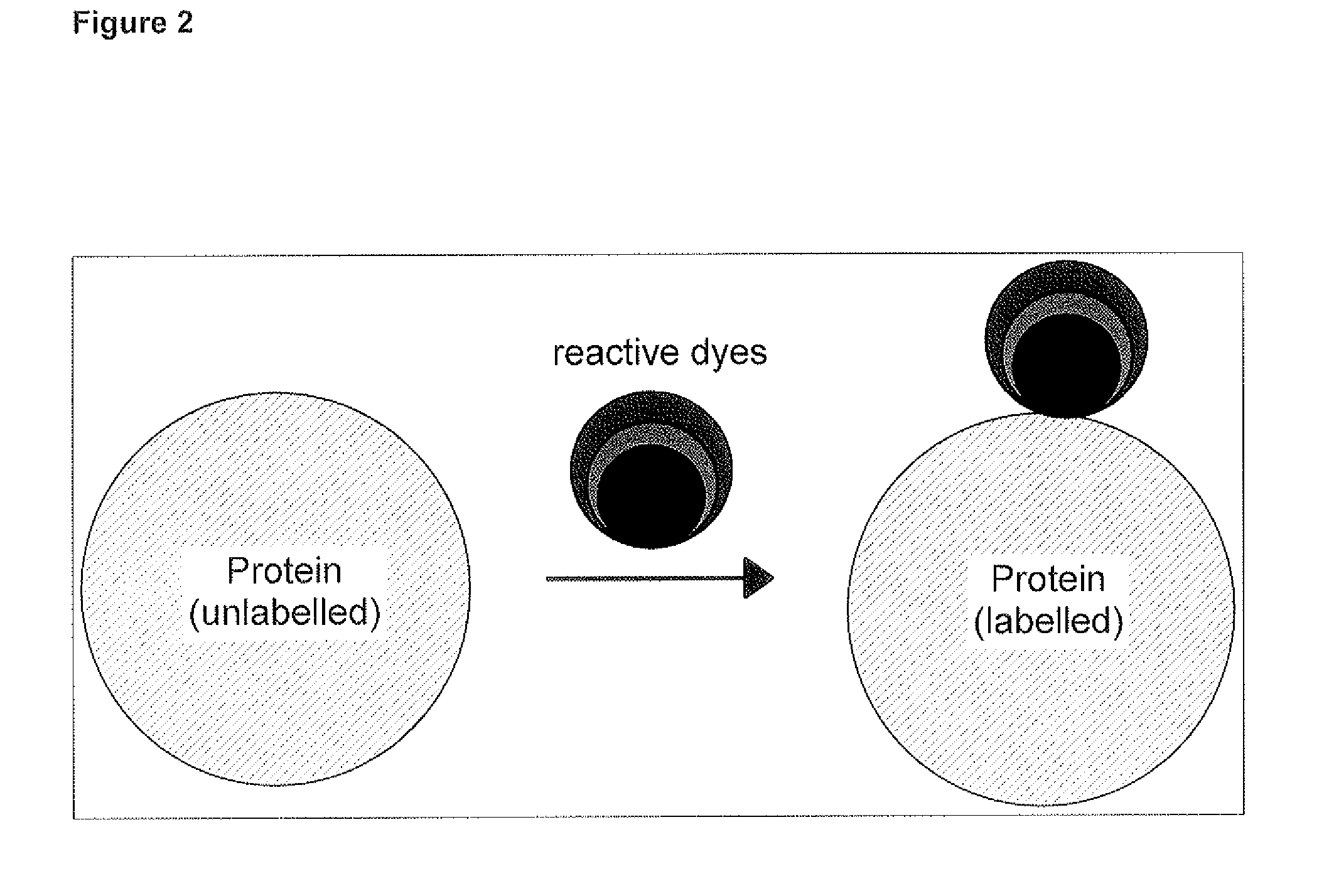Qualitative and/or quantitative determination of a proteinaceous molecule in a plurality of samples
- Summary
- Abstract
- Description
- Claims
- Application Information
AI Technical Summary
Benefits of technology
Problems solved by technology
Method used
Image
Examples
examples
Protein Extraction
[0200]For the protein extraction, 0.8 g frozen and ground plant material (leaf or root) was used. The sample was provided with a threefold volume (2.4 ml) of an extraction buffer (100 mM HEPES-KOH (pH 7.5), 5% glycerol, 5 mM EDTA, 0.1% f3-mercaptoethanol, 1% proteinase inhibitor) and was vigorously shaken for 10 minutes at 4° C. The sample was then centrifuged for 10 minutes with 5000 rpm (Eppendorf centrifuge 5403) at 4° C. The supernatant was removed, the centrifugation step was repeated and the supernatant was then filtrated (Rotilabo® syringe filter 0.45 μm, Roth). The clear filtrate was provided with about the same volume of phenol. The solution was vigorously shaken and incubated on ice for 5 minutes. To obtain an optimal phase partition, the solution was centrifuged for 10 minutes with 5000 rpm at 4° C. The lower phase was transferred and provided with about the same volume of Re extraction buffer (100 mM Tris-HCl (pH 8.4), 20 mM KCl, 10 mM EDTA, 0.4% β-merc...
PUM
| Property | Measurement | Unit |
|---|---|---|
| Molar mass | aaaaa | aaaaa |
| Molar mass | aaaaa | aaaaa |
| Molar mass | aaaaa | aaaaa |
Abstract
Description
Claims
Application Information
 Login to view more
Login to view more - R&D Engineer
- R&D Manager
- IP Professional
- Industry Leading Data Capabilities
- Powerful AI technology
- Patent DNA Extraction
Browse by: Latest US Patents, China's latest patents, Technical Efficacy Thesaurus, Application Domain, Technology Topic.
© 2024 PatSnap. All rights reserved.Legal|Privacy policy|Modern Slavery Act Transparency Statement|Sitemap



